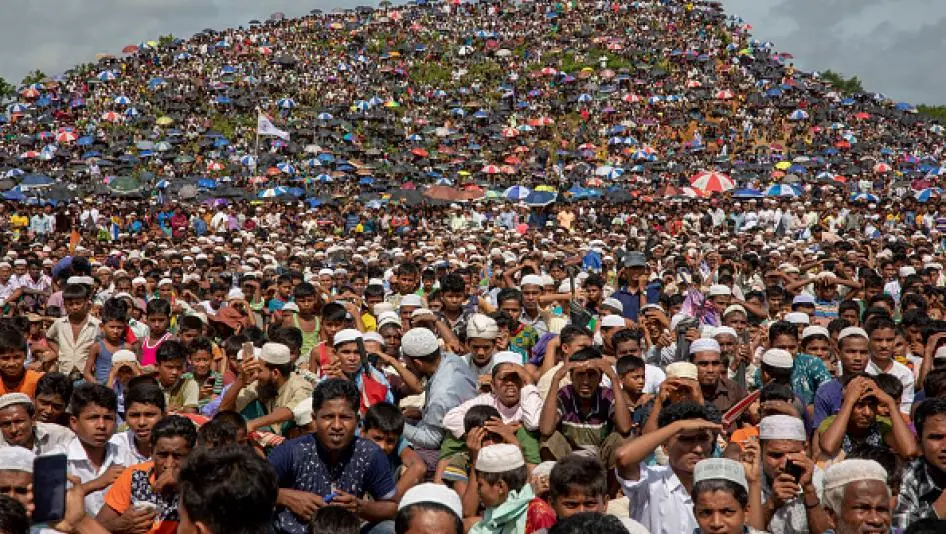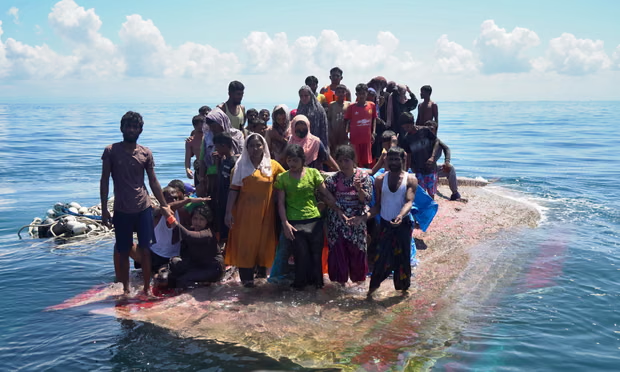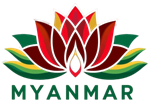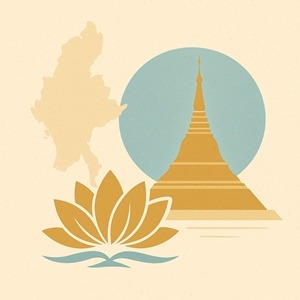
The Rohingya issue in Myanmar is a long-standing, complex conflict rooted in ethnicity, religion, politics, and nationality, with origins tracing back to Myanmar’s independence in 1948. Below is a detailed chronological overview of the Rohingya crisis starting from 1948 to the present day.
 Background: Who are the Rohingya?
Background: Who are the Rohingya?
The Rohingya are a Muslim ethnic minority from Rakhine State (formerly Arakan) in western Myanmar. They speak a dialect similar to Chittagonian Bengali and have lived in the region for generations, though their origins are contested.
The Myanmar government and many Burmese Buddhists do not recognize the Rohingya as indigenous, instead labeling them as illegal Bengali immigrants from Bangladesh.
In contrast, the Rohingya claim ancestral roots in Rakhine dating back centuries, citing historical Muslim presence during the Arakanese kingdom and British colonial period.
 1948–1962: Post-Independence Period
1948–1962: Post-Independence Period
Myanmar (then Burma) gained independence from Britain in 1948.
The 1948 Union Citizenship Act allowed some Rohingya to apply for citizenship, but the definition of ethnic groups excluded the Rohingya.
During this period, armed Rohingya mujahideen groups emerged, demanding either autonomy or integration with East Pakistan (now Bangladesh).
This raised suspicion against the Rohingya population and set the tone for future marginalization.
 1962–1982: Ne Win’s Military Rule and Systematic Discrimination
1962–1982: Ne Win’s Military Rule and Systematic Discrimination
In 1962, General Ne Win led a coup and established military rule.
A nationalistic campaign known as the “Burmese Way to Socialism” promoted Burman Buddhist identity, increasing pressure on ethnic minorities.
The Rohingya were increasingly portrayed as a security threat.
Key Event:
1977 – Operation Nagamin (“Dragon King”):
A military campaign aimed at “scrutinizing” citizens and expelling foreigners.
Led to mass persecution, arbitrary arrests, and the exodus of over 200,000 Rohingya to Bangladesh.
Though many later returned, it marked a turning point in state-led discrimination.
 1982: Citizenship Law – Legal Erasure of Rohingya Identity
1982: Citizenship Law – Legal Erasure of Rohingya Identity
The 1982 Citizenship Law denied citizenship to any ethnic group not listed as a “national race.”
Rohingya were not included, despite prior recognition.
As a result:
Rohingya became stateless.
Denied access to education, healthcare, employment, and freedom of movement.
The government refused to recognize “Rohingya” as an ethnic name, insisting they be called “Bengali.”
 1990s: Continued Persecution and Refugee Crises
1990s: Continued Persecution and Refugee Crises
Throughout the 1990s, the Myanmar military continued its systematic oppression.
Forced labor, land confiscation, extortion, and restrictions on marriage and movement became widespread.
Key Event:
1991–1992 – Operation Pyi Thaya:
Another military crackdown in northern Rakhine.
Over 250,000 Rohingya fled to refugee camps in Bangladesh.
Many were later repatriated under international pressure, but abuse and fear persisted.
 2000s: Rise of Buddhist Nationalism
2000s: Rise of Buddhist Nationalism
The early 2000s saw increased Islamophobia and rising Buddhist nationalist sentiment, fueled by monks and political groups like MaBaTha.
Anti-Muslim propaganda spread through media and sermons, heightening tensions between Rohingya Muslims and Rakhine Buddhists.
 2012: Communal Violence and Internal Displacement
2012: Communal Violence and Internal Displacement
Key Event:
In June and October 2012, communal violence broke out in Rakhine between Rohingya Muslims and Rakhine Buddhists.
Officially, over 200 people were killed and over 140,000 (mainly Rohingya) displaced into internally displaced person (IDP) camps.
Camps were heavily restricted; many Rohingya were left in dire humanitarian conditions.
 2015: Disenfranchisement and Mass Migration
2015: Disenfranchisement and Mass Migration
In 2015, ahead of national elections, temporary identity cards (“white cards”) were revoked from Rohingya, stripping them of voting rights.
This led to more international condemnation, while thousands attempted to flee by sea.
Key Event:
2015 Rohingya refugee crisis:
Thousands took to boats to escape.
Many were stranded at sea as countries like Thailand, Malaysia, and Indonesia initially refused entry.
 2016–2017: Ethnic Cleansing and Genocide
2016–2017: Ethnic Cleansing and Genocide
Key Events:
October 2016 and August 2017 – Armed attacks by the Arakan Rohingya Salvation Army (ARSA) on police posts prompted brutal military “clearance operations”.
August 2017 Crisis:
Myanmar military, along with local mobs, launched a large-scale campaign.
The UN described it as a “textbook example of ethnic cleansing.”
Reports included:
Mass killings
Rape and sexual violence
Burning of entire villages
Over 750,000 Rohingya fled to Bangladesh, joining others in Cox’s Bazar, which became the world’s largest refugee camp.
 2019–Present: International Response and Legal Actions
2019–Present: International Response and Legal Actions
2019: The Gambia filed a case at the International Court of Justice (ICJ) against Myanmar for violating the Genocide Convention.
The ICJ ordered provisional measures to prevent further acts of genocide.
Aung San Suu Kyi, Myanmar’s de facto leader, controversially defended the military at The Hague.

Current Situation:
Over 1 million Rohingya remain in refugee camps in Bangladesh with no pathway to return due to fear of persecution.
Inside Myanmar, remaining Rohingya continue to live under severe restrictions.
The 2021 military coup worsened the situation, as Myanmar plunged into political chaos.
 Key Issues Today
Key Issues Today
Statelessness – No legal identity or citizenship rights.
Refugee crisis – Ongoing displacement with limited prospects for repatriation.
Lack of accountability – Despite international efforts, no meaningful justice has occurred.


